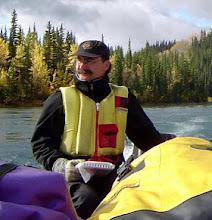 |
| Sennon Beach - one of the surfing destinations, cold water through. |
The following days were sunny and we walked through one of the most intensively developed mining districts of Britain. From Roman times there have been tin mines in Cornwall. The invention of steam-powered engines allowed deeper mines and greater production. By the early 19th century the country side was littered with stone boiler houses, smelting furnaces, pit heads and the crowded hovels of the tens of thousands of miners, and their families, who lived life under permanently coal-darkened skies. Now, the mines are long closed, some are museums, the rest romantic ruins sheltered in World Heritage Sites and paddocks. The population of Cornwall is a small fraction of its mining hay day. However computer and business management firms remove here from London offering their employees lifestyle and affordable housing.

 |
|
Little is left to chance on the trail. Signs warn of all sorts of dangers. My favorites were the 200 kg chunks of polished granite lying beside the trail near Lands End. Precisely chiseled into each block was a single word, highlighted with red paint, CLIFF. Beach front houses, too polite to say no trespassing,instead mounted well illustrated placards warning of "Poison Snakes."
But most locals are friendly. When Chris bought a shirt in Penzance the young clerk advised us to drop down into a small secluded beach some distance beyond Land's End. He explained that it was the site of his successful courtship of his now wife. Nanjizil Beach was indeed stunning and if the marriage is as spectacular as the cove it will be both passionate and prolific.
 |
| Nanjizil Beach |
The Minic Theatre at Port Curno is a fine example of the eccentric possibilities of the English. It is an 800 seat theatre carved out of the sea cliffs providing open air drama through a 17 week summer season. And it is always packed. The result of the ceaseless labour of Rowena Cade who first arranged a gorse strewn cliff gully into a stage for "The Tempest" in 1932. Now managed by a charitable trust the theatre offers a dramatic venue for performances. Audience arrives early jostling for the open seating. Each group packs in wine and glasses, smoked salmon, fresh bread and cheese and fruit for a fine supper in the evening dusk waiting for the sun to go down and the curtain to come up.
 |
| "The Pirates of Penzance" played the night we were in Port Curno.Performed by the same Cambridge University theatre group we watched during our time in Cambridge five years ago. |
|
|
The Celtic remains of a long ago Cornwall still adorn many fields. Standing stones and tumuli are widely dispersed. On our way from the Minic Theatre we stop at the "Merry Maidens" a circle of upright stones in the middle of a pasture. Our grandfatherly taxi driver tells us the dour church parsons of the past remonstrated that the foolish girls must have been dancing on the Sabbath and were turned to stone by the devil. A curious devil doing the Lord's anger. I suspect it was shepherds putting up dancing decoys hoping to lure maidens to their lonely stations.












No comments:
Post a Comment